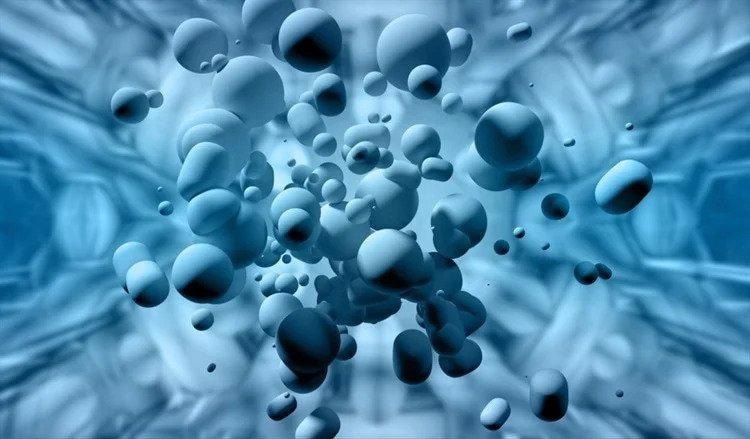A research article in Chemistry of Materials revealed that controlled exfoliation of highly crystalline molybdenum disulfide (MoS2) using water as a solvent is highly beneficial for industrial optoelectronic applications.

Study: Controlling the Hierarchical Structures of Molybdenum Disulfide Nanomaterials via Self-Assembly of Supramolecular Polymers in Water. Image Credit: GiroScience/Shutterstock.com
Introduction to Molybdenum Disulfide
Owing to its intriguing background and peculiar two-dimensional (2D) nanostructure, molybdenum disulfide (MoS2), like graphene, has been one of the most intensively researched materials.
MoS2 is a new family of semiconducting 2H-to-metallic 1T phase transition-metal dichalcogenides (TMDCs) with a lamellar sandwich-like structure. The synthesis of top-notch TMDCs with a minimal number of hexagonal atomic layers is of great interest and relevance for both basic research and a wide range of possible applications.
It is widely utilized in field-effect transistor applications along with extensive applications in the photovoltaic industry, chemical sensing industry, and valleytronic industrial frameworks. Researchers have recently been engaged in the development of efficient ways the manufacture large-area homogeneous MoS2 nanofilms with regulated layer counts because of their excellent electrical and optical capabilities.
Synthesis of Molybdenum Disulfide
Depilation of MoS2 crystalline structure into nanostructured sheets is a crucial step in generating the excellent optical mobility necessary for high-performance optoelectronic devices. Chemical exfoliation through ion deposition, hydrothermal method, chemical vapor deposition on precursors, micromechanical debonding, and liquid-phase exfoliation are some of the applied physiochemical synthesis techniques for MoS2 nanosheets with the minimum number of layers.
Limitations of Classical Methods
The process of chemical exfoliation changes the crystalline phase, destroying the conductive characteristics of the fabricated MoS2 nanosheets and severely affecting their optoelectronic properties. Chemical vapor deposition, hydrothermal method, and nanoindentation cleavage are all highly resource-consuming, lengthy procedures that are inappropriate for producing mono-layered MoS2 nanosheets on a commercial scale.
LPE Process and Its Disadvantages
LPE with organic solvents has recently been described as a straightforward method for mass-producing commercial-scale 2D nanostructure. Only a few solutions have proven effective in exfoliating and dispersing multilayer nanosheets, such as dimethyl sulfoxide. However, due to their high boiling temperatures, these solvents are hazardous and inappropriate for the long-term development of ecologically friendly approaches.
Due to their challenging extraction process, a sustainable, dependable, efficient, and environmentally friendly method for successful dispersant aided LPE in an aqueous medium that rapidly delaminates sheets and facilitates MoS2 dispersion is urgently needed.
Is Water the Perfect Choice as a Solvent for Exfoliation?
The search for a sustainable, low-toxicity solvent that can effectively exfoliate MoS2 is vital. Water is an environmentally safe and biocompatible solvent that, however, due to its high hydrophilic nature, does not efficiently aid in the abrasion of 2D nanomaterials. Unfortunately, exfoliated MoS2 nanosheets with the requisite coating thickness and dispersion durability could not be achieved using water-dispersed MoS2 nanosheets.
In the latest article, the researcher attempted to use a two-step LPE technique to establish a new strategy for planned delamination of MoS2 nanosheets in water with a bifunctional cytosine-end-capped supramolecular macromer Cy-PPG.
Research Findings
In water, dynamic light scattering (DLS) indicated that Cy-PPG had a monomodal distribution, an average hydrodynamic size of 87.16±1.64 nm, and a polydispersity index of 0.29, indicating that Cy-PPG can spontaneously self-assemble into forms with distinct nanostructures. The powdered crystals of E-MoS2 nearly fully precipitated out of solution with less than 50% Cy-PPG.
Surprisingly, when the Cy-PPG concentration of the E-MoS2 solutions exceeded 65 percent, the precipitation of E-MoS2 following ultrasonication steadily reduced as the Cy-PPG level increased. Aqueous E-MoS2 mixtures with a Cy-PPG level of more than 65 percent may allow for more synchronized reactions between E-MoS2 and Cy-PPG.
Furthermore, the light penetration of aqueous E-MoS2 solution rose gradually from 42% after one day to 86% after 45 days, demonstrating that E-MoS2 has a significant potential to form big aggregates over time. Surprisingly, compared to the E-MoS2 solution, all E MoS2/Cy-PPG solutions with varying Cy-PPG concentrations (65-90 percent) displayed much greater MoS2 dispersion reliabilities, with light penetration only marginally increasing after 45 days.
The AFM pictures and height characteristics also revealed that when the Cy-PPG concentration rose, the mean thickness of the E-MoS2 nanosheets reduced from 5 to 2 nm. The spin-coated E-MoS2 thin film has a conductance of 50.1 ± 2.3 S/cm after the initial exfoliation of MoS2 in water, which is much greater than that of pure MoS2. After the subsequent abrasion, the spin-coated monolayer film had a high electrical conductivity of 127 ± 3.2 S/cm.
Overall, this newly designed, ecologically friendly, controlled exfoliation technology provides a simple, adaptable, and very successful method for producing water-dispersible MoS2 nanosheets.
Reference
Melaku, A., Chuang, W., Chiu, C., Lai, J. and Cheng, C., (2022) Controlling the Hierarchical Structures of Molybdenum Disulfide Nanomaterials via Self-Assembly of Supramolecular Polymers in Water. Chemistry of Materials. https://pubs.acs.org/doi/10.1021/acs.chemmater.2c00140
Disclaimer: The views expressed here are those of the author expressed in their private capacity and do not necessarily represent the views of AZoM.com Limited T/A AZoNetwork the owner and operator of this website. This disclaimer forms part of the Terms and conditions of use of this website.